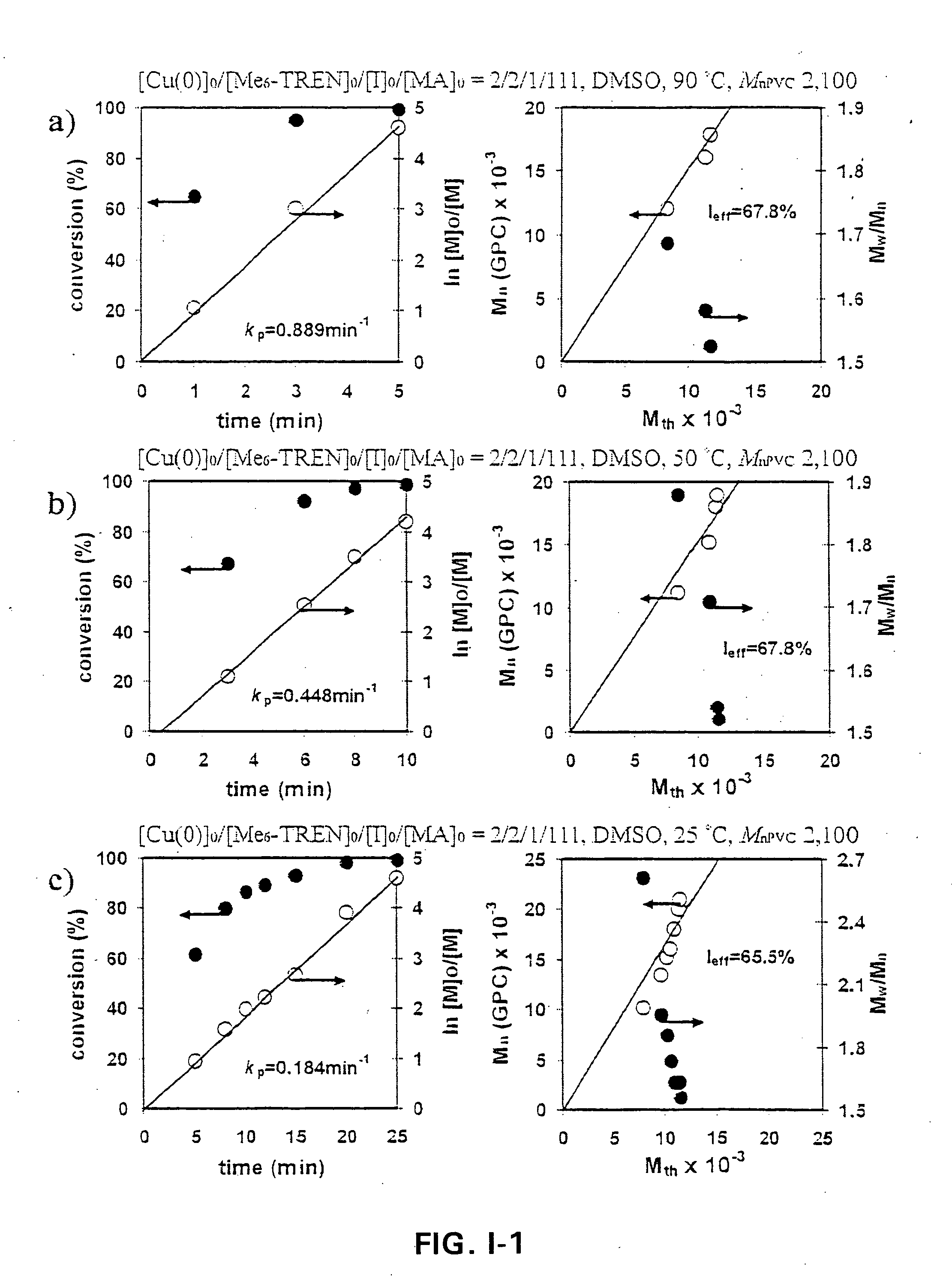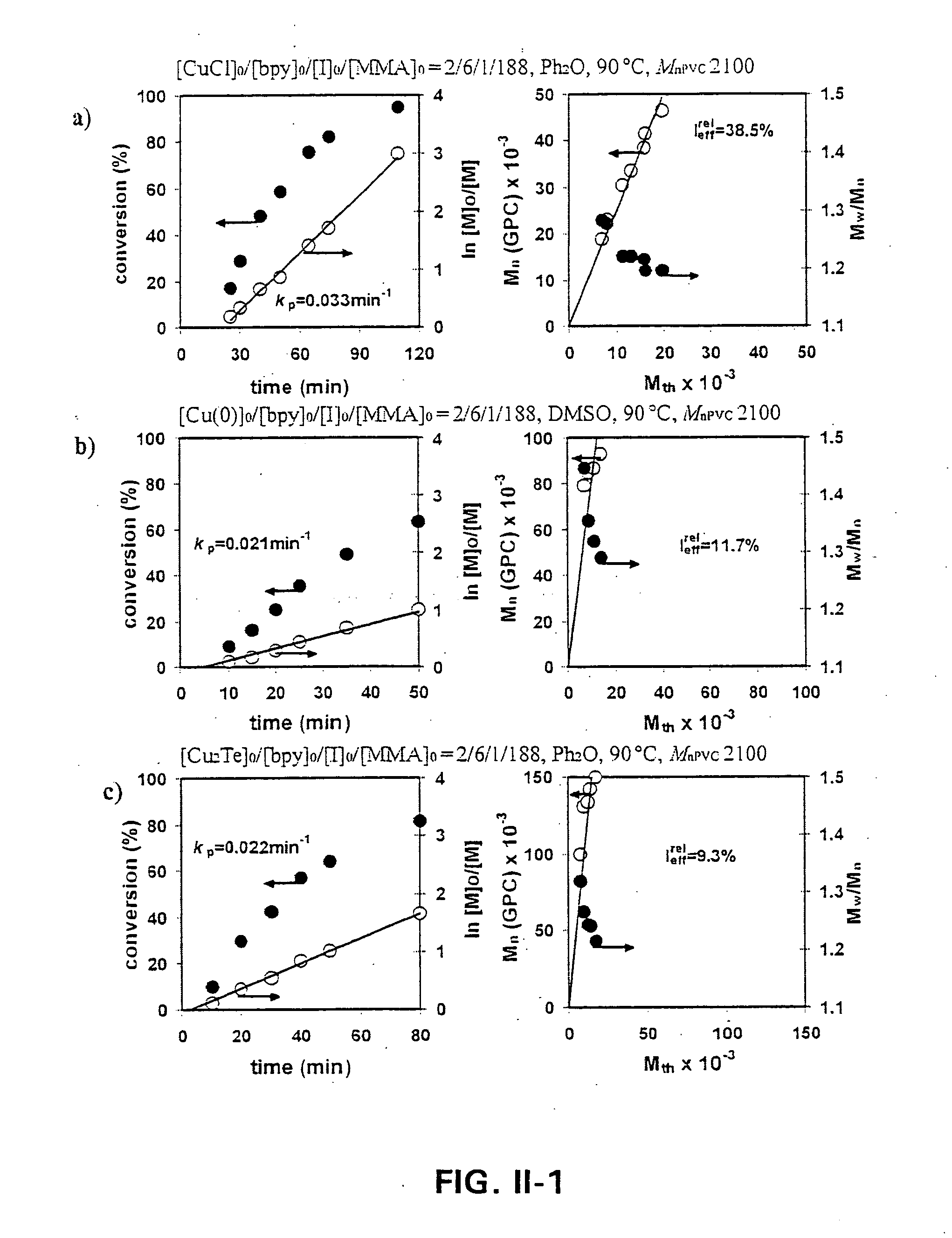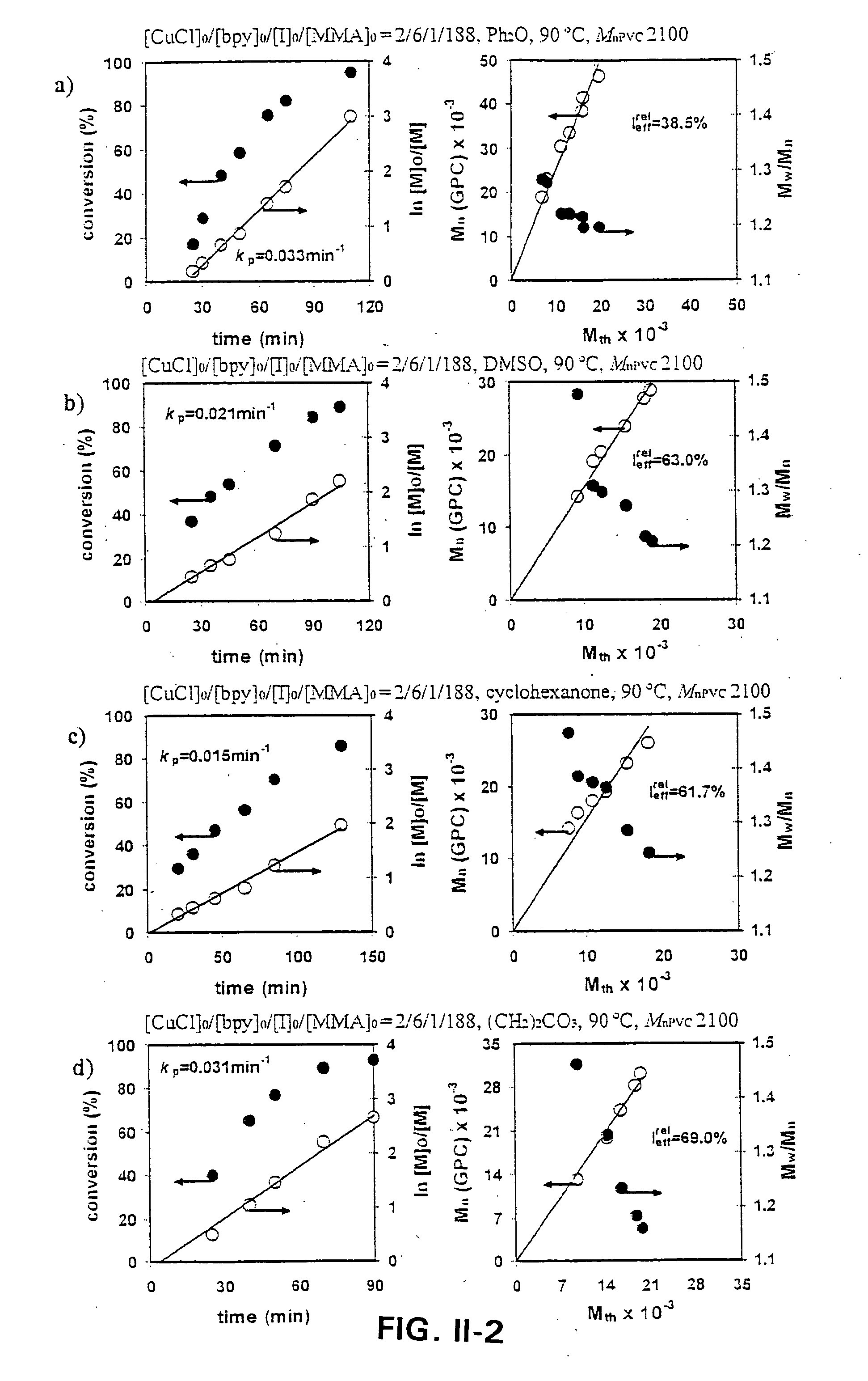Living radical polymerization of halogen-containing and acrylic monomers and the formation of block copolymers therefrom
- Summary
- Abstract
- Description
- Claims
- Application Information
AI Technical Summary
Benefits of technology
Problems solved by technology
Method used
Image
Examples
example i
Metal Catalyzed Living Radical Polymerization and Block Copolymerization of Methyl Acrylate Initiated From an α,ω-di(iodo) PVC Macro Initiator
[0139] A block copolymer of PMA-b-PVC-b-PMA was made by Cu(O) / Me6-TREN catalyzed living radical block copolymerization of methyl acrylate (MA) initiated from α,ω-di(iodo)PVC in DMSO. The living radical block polymerization was carried out at temperatures of 90° C., 50° C. and 25° C. and kinetic plots are set forth in FIG. I-1 for the following conditions [α,ω-di(iodo)PVC]0 / [Cu(O)]0 / [Me6-TREN]0 / [MA]0=2 / 2 / 1 / 111 (molar ratios). As apparent from the figures, relatively high conversions of at least 80% were rapidly achieved as in 25 minutes or less. Even with these ultra fast block copolymerization times, molecular weight distribution values of about 1.50 were obtained!
[0140] A procedure for the block copolymerization of methyl acrylate initiated from α,ω-di(iodo)PVC is as follows: 210 mg of α,ω-di(iodo)PVC macroinitiator (Mn=2,100 Mw / Mn=1.84, 0.1...
example ii
Formation of PMMA-b-PVC-b-PMMA Block Copolymers Derived From α,ω-Di(Iodo)PVC Utilizing Various Different Copper Catalysts, Different Solvents, Different Ligands, and Different Number Average PVC Blocks
[0143] Synthesis of α,ω-Di(Iodo)PVC
[0144]α,ω-Di(Iodo)PVC with number average molecular weight (Mn) ranging from 2,100 to 20,000 and molecular weight distribution values (Mw / Mn) from 1.72 to 2.16 were synthesized by SET-DTLRP of VC initiated with CHI3 and catalyzed by Na2S2O4 at 25° C.-35° C. in H2O by a method as set forth herein above.
[0145] Influence of Copper Catalyst / bpy on the Rate of Block Copolymerization of MMA
[0146] The efficiency of various copper / bpy catalysts on the living radical block copolymerization of MMA initiated from the chain ends of α,ω-Di(Iodo)PVC with Mn=2,100 and Mw / Mn=1.84 was investigated by kinetic experiments carried out at 90° C. by using Ph2O as diluent. All block copolymerization experiments were performed in 25 mL Schlenk tubes. Since PVC is not sol...
example iii
[0169] The formation PMMA-b-PVC-b-PMMA block copolymers is set forth utilizing a Cu(O) catalyst in the presence of DMSO at different temperatures utilizing different ligands, different amounts of DMSO and different number average molecular weights of PVC. The preparation of α,ω-Di(Iodo)PVC having a number average molecular weight (Mn) ranging from 2,100 to 29,800 and molecular weight distribution (Mw / Mn) between 1.74 and 2.16 was made by SET-DTLRP of vinyl chloride (VC) initiated with CHI3 and catalyzed by Na2S2O4 at 25° C.-35° C. in H2O in a manner as set forth herein above.
[0170] Influence of ligand on the rate of block copolymerization of MMA initiated from α,ω-Di(Iodo)PVC with Mn=2,100 in DMSO and catalyzed by Cu(O) at 90° C. in DMSO.
[0171] FIGS. III-1 and III-2 show representative kinetic experiments performed with α,ω-Di(Iodo)PVC of Mn=2,100 and Mw / Mn=1.84 at 90° C. In all experiments classic kinetic plots demonstrated a living polymerization.
[0172] The change of ligand of ...
PUM
| Property | Measurement | Unit |
|---|---|---|
| Temperature | aaaaa | aaaaa |
| Temperature | aaaaa | aaaaa |
| Temperature | aaaaa | aaaaa |
Abstract
Description
Claims
Application Information
 Login to View More
Login to View More - R&D
- Intellectual Property
- Life Sciences
- Materials
- Tech Scout
- Unparalleled Data Quality
- Higher Quality Content
- 60% Fewer Hallucinations
Browse by: Latest US Patents, China's latest patents, Technical Efficacy Thesaurus, Application Domain, Technology Topic, Popular Technical Reports.
© 2025 PatSnap. All rights reserved.Legal|Privacy policy|Modern Slavery Act Transparency Statement|Sitemap|About US| Contact US: help@patsnap.com



